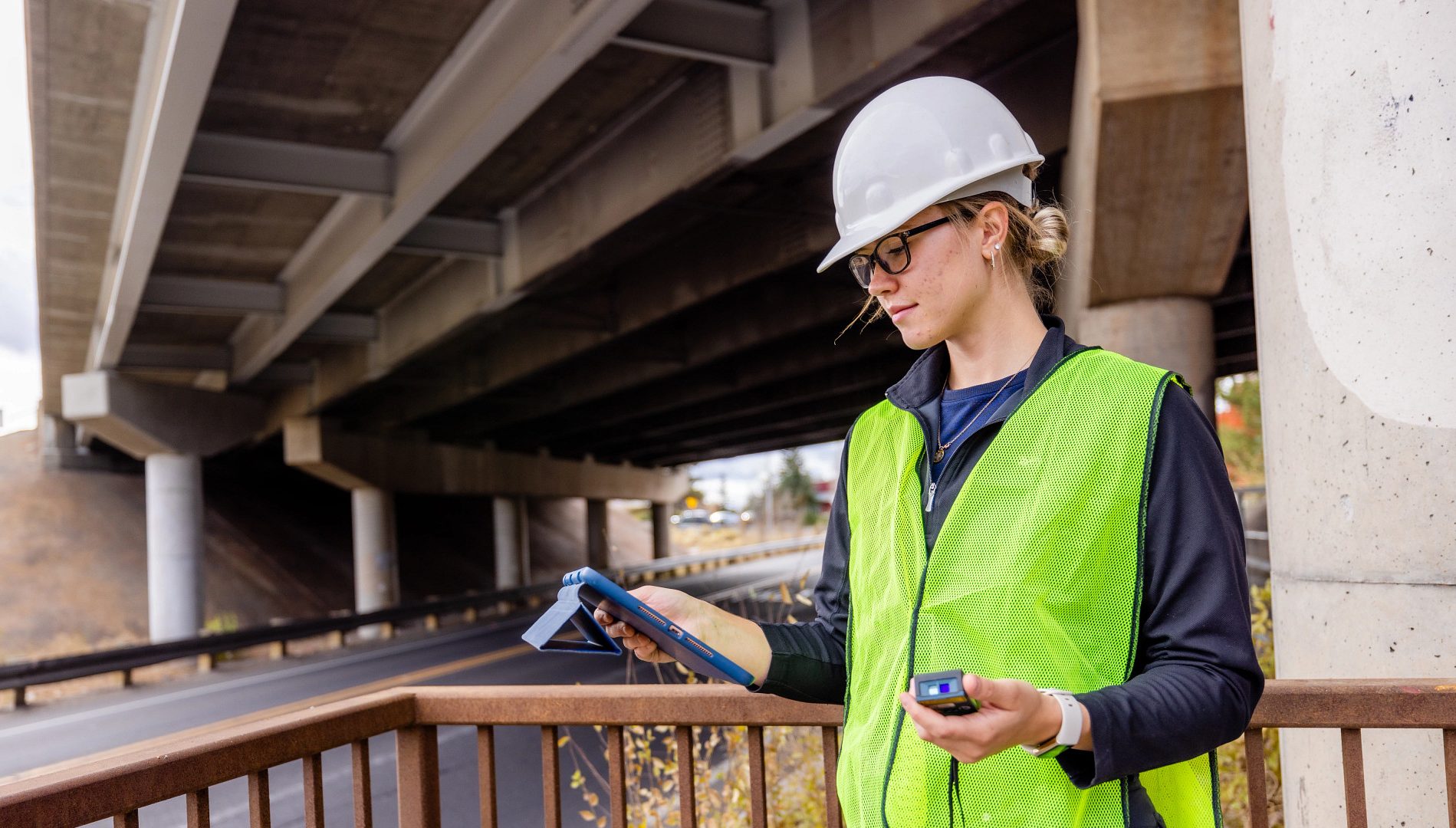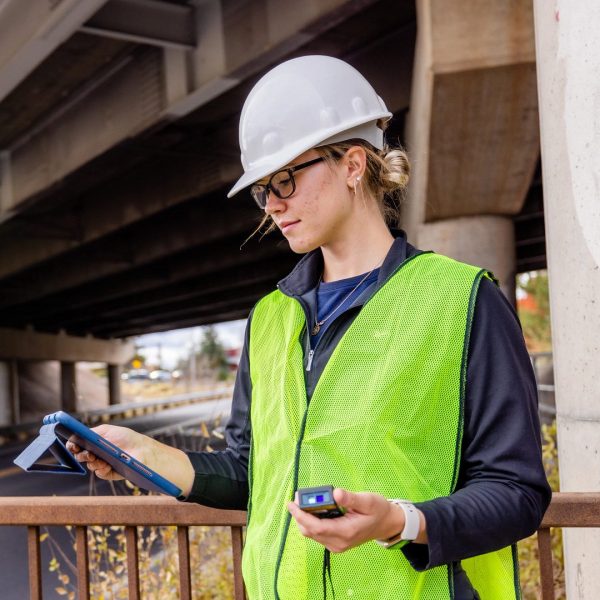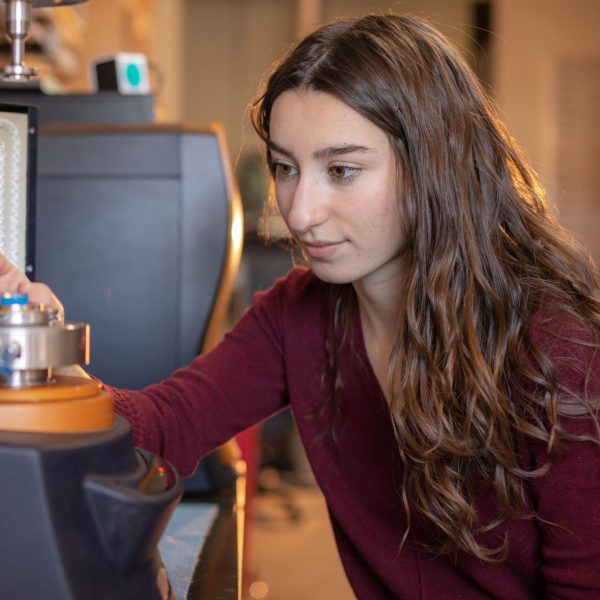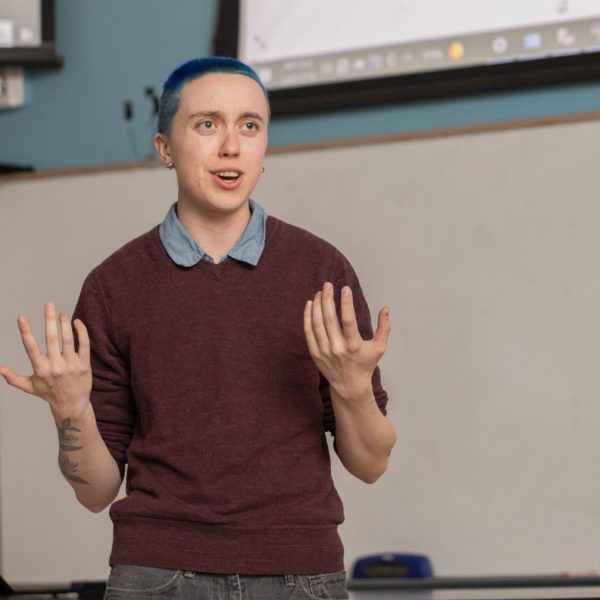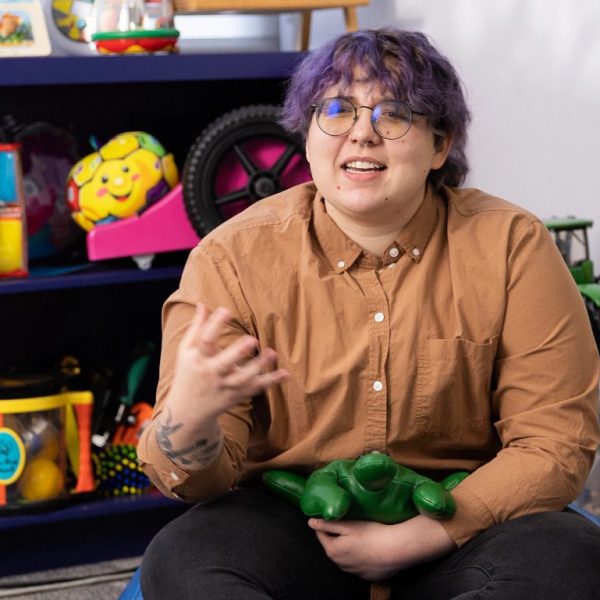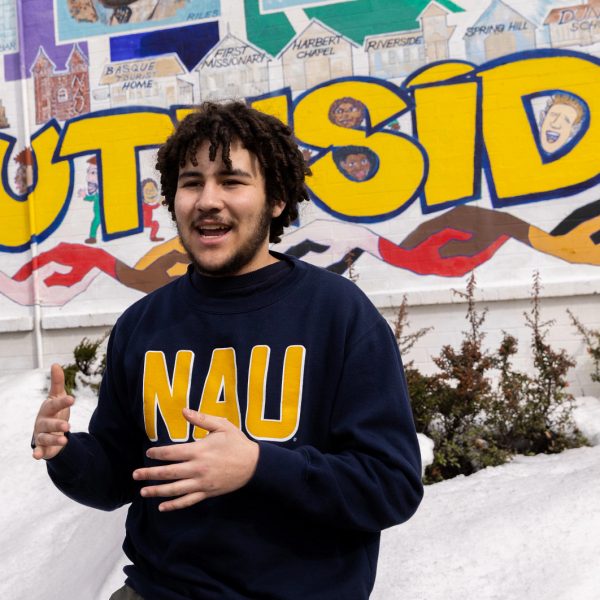NAU Civil Engineering major Jenna Hays finds bridges fascinating.
“Without bridges, every land transportation route would be pretty much impossible,” she says. “They’re a really important part of our infrastructure, and before I started research, I took them for granted.”
Funded through the Hooper Undergraduate Research Award (HURA), Hays recently finished studying a bridge in Coconino County, Arizona. In April, she will share the results during her second trip to the Undergraduate Symposium.
Bridge work for the Undergraduate Symposium
For the project, Hays assessed a steel girder bridge that was built in 1934 and reconstructed in 1968. Her tests focused on the weight limits of the bridge. “We instrumented the bridge with strain gauges and ran a big dump truck over it in multiple positions,” she explains. “Then we collected all the strain data from the girders.”
The data they collected—the bridge’s current observed live load rating—will be compared with the estimated 1968 load rating. A “live load” is anything adding to a bridge’s weight. This analysis gives an idea of the bridge’s ability to bear weight, known as its integrity. Hays allows that the bridge’s performance could have deteriorated, but speaks up for well-designed bridges. “A lot of old bridges were built properly, so they have quite a long lifespan but are starting to deteriorate slowly over time,” she adds. “This one doesn’t look bad. We went out there and did our field test, collected data, and it seems to be in pretty good condition.”
For her first Undergraduate Symposium project, Hays received the Jean Shuler research mini-grant to test glass fiber-reinforced polymer (GFRP) bars and couplers used in bridge construction. She tested different configurations of the couplers that connect the bars. The project aligned with her passion for sustainability. “Those bars and couplers are more sustainable because they’re corrosion resistant,” she points out. “If you put steel on a bridge, over time, it can corrode, requiring more maintenance or even reducing the lifespan of the bridge.”
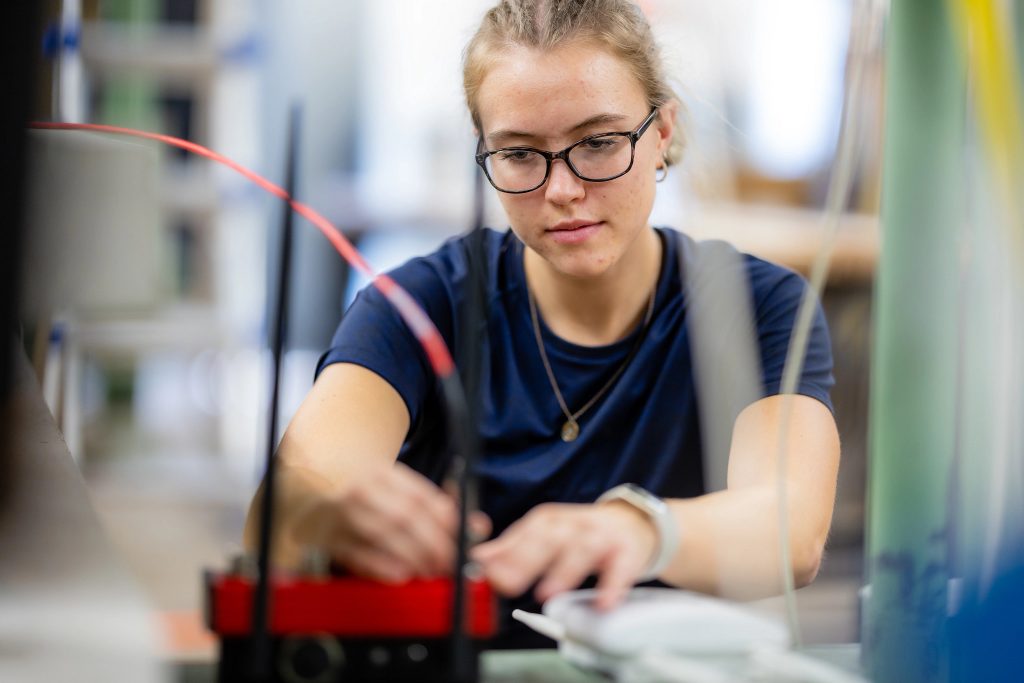
Hays also sees the connection between sustainability and existing bridges. “If [we test a bridge] and can then change that load rating to let heavier trucks come over, that could streamline their transportation route, which is more fuel efficient.”
Her mentor on both projects, Civil Engineering Associate Professor Ben Dymond, initially sparked Hays’ interest in research. “He’s been there with me every step of the way,” she says. “He’s done a really good job at pushing me when I’m able to be pushed, but he also realizes when I need help and am completely lost. He then steps in and provides the support that I need.”
Building connections at NAU
Earlier in her academic career, in a world wracked by Covid, Hays worked to find community through university programs. “NAU does a really good job at getting students involved and finding meaning outside the classroom,” she says.
During a summer internship in Oregon, she inspected over 200 bridges and learned how to effectively communicate the inspection results with clients. She also joined the American Society of Civil Engineers on campus, where she networked with other civil engineers and industry professionals, received career preparation advice, and participated in engineering competitions.
What she was most proud of, however, was her work as a Supplemental Instruction leader for an engineering statics course. “I felt fulfilled in being able to help students that came after me,” she says, “because I’ve been there and I know how important it is.”
Hays is set to graduate in May 2024, but tempering her excitement because she plans on heading straight into a master’s program. While she envisions continuing to work with bridges, teaching is also on the horizon. “I could see myself using the degree to gain some valuable industry experience and then somehow giving back to the next generation of engineering students, whether that’s through teaching one class after work at a university or staying involved through professional organizations.”

